At CarMax Vehicle, we understand that precision in heavy haul trailer dimensions is paramount to ensuring the safe and efficient transportation of oversized and overweight loads. This comprehensive guide delves into the intricacies of heavy haul trailer dimensions, providing valuable insights for businesses seeking reliable solutions in heavy transportation. Whether you are navigating regulatory requirements or optimizing your fleet for diverse haulage needs, our expertise in heavy haul trailers positions us as your trusted partner in the industry.
Understanding Heavy Haul Trailers
What Defines a Heavy Haul Trailer?
Heavy haul trailers are specialized transport vehicles designed to carry exceptionally large, heavy, or bulky loads that exceed standard transportation limits. These trailers are engineered with robust structures, advanced suspension systems, and customizable dimensions to accommodate a wide range of cargo, from industrial machinery to construction equipment.

Key Components Influencing Trailer Dimensions
- Frame Design: The backbone of any heavy haul trailer, determining the overall strength and stability.
- Axle Configuration: Impacts load distribution and adherence to weight regulations.
- Decking Material: Influences load capacity and durability.
- Adjustable Features: Allow for customization to fit specific load requirements.
Standard Dimensions of Heavy Haul Trailers
While heavy haul trailers are often custom-built to meet specific transportation needs, understanding standard dimensions provides a foundational framework for planning and compliance.
Common Size Specifications
| Trailer Type | Length (ft) | Width (ft) | Height (ft) | Weight Capacity (tons) |
|---|---|---|---|---|
| Extendable Trailer | 30 – 60 | 8.5 | 13.5 | 100 – 200 |
| Gooseneck Trailer | 40 – 70 | 8.5 | 14 | 120 – 250 |
| Double Drop Deck | 35 – 65 | 8.5 | 12 | 150 – 300 |
| Multi-Axle Trailer | 50 – 80 | 10 | 15 | 200 – 400 |
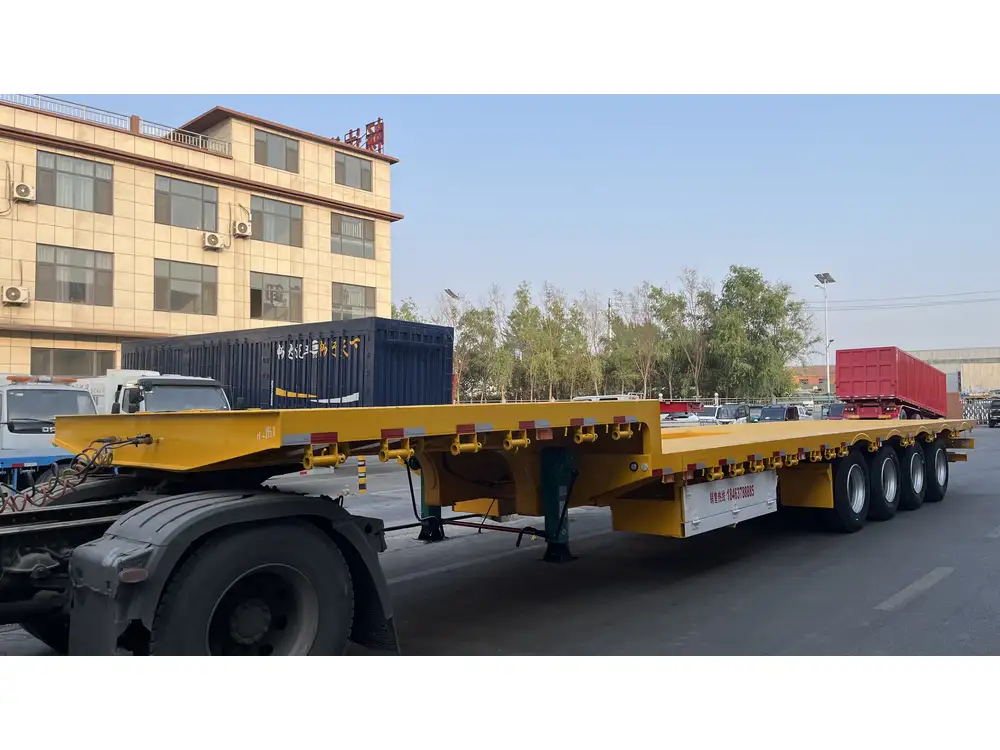
Regulatory Compliance
Adhering to federal and state regulations is crucial. The dimensions of heavy haul trailers must comply with the Department of Transportation (DOT) and state-specific guidelines to ensure legal and safe operations.
- Length Limits: Typically up to 135 feet for combination loads.
- Width Limits: Generally limited to 8.5 feet, with permits required for wider loads.
- Height Limits: Usually capped at 13.5 feet to navigate under bridges and overpasses.
- Weight Limits: Vary by state but often range between 80,000 to 100,000 pounds gross vehicle weight.
Customizing Trailer Dimensions for Specific Needs
Tailored Solutions for Unique Loads
At CarMax Vehicle, we excel in customizing trailer dimensions to meet the unique requirements of your heavy haul projects. Customization options include:
- Adjustable Lengths: Extendable sections to accommodate varying load lengths.
- Modular Designs: Reconfigurable components for versatile transportation needs.
- Enhanced Suspension Systems: To support heavier weights and uneven terrains.
- Specialized Decking: Reinforced materials for increased durability and load-bearing capacity.

Factors Influencing Custom Dimensions
- Load Size and Shape: Determines the necessary deck area and structural support.
- Weight Distribution: Ensures stability and compliance with weight regulations.
- Route Constraints: Considers road conditions, bridge heights, and infrastructure limitations.
- Operational Efficiency: Balances customization with ease of use and maintenance.
Types of Heavy Haul Trailers and Their Dimensions
Extendable Trailers
Extendable trailers offer adjustable lengths to accommodate oversized loads without compromising stability. They are ideal for industries requiring versatile transport solutions.
- Standard Length: 30 to 60 feet
- Customization: Extendable sections can add up to 20 feet
- Applications: Wind turbine blades, large industrial equipment, construction machinery

Gooseneck Trailers
Gooseneck trailers feature a protruding neck that distributes weight more evenly across the axles, enhancing stability for heavy loads.
- Standard Length: 40 to 70 feet
- Width: 8.5 feet
- Height: Up to 14 feet
- Weight Capacity: 120 to 250 tons
- Applications: Steel beams, generators, large agricultural equipment
Double Drop Deck Trailers
Double drop deck trailers have two deck levels, allowing for increased load height while maintaining a low profile for better maneuverability.
- Standard Length: 35 to 65 feet
- Deck Height: Lower deck to accommodate taller loads
- Weight Capacity: 150 to 300 tons
- Applications: Power transformers, wind towers, oversized machinery
Multi-Axle Trailers
Multi-axle trailers are equipped with additional axles to distribute heavy loads more effectively, ensuring compliance with weight regulations.
- Standard Length: 50 to 80 feet
- Width: 10 feet
- Height: Up to 15 feet
- Weight Capacity: 200 to 400 tons
- Applications: Bridge components, large manufacturing equipment, modular buildings

Detailed Examination of Heavy Haul Trailer Dimensions
Length Considerations
The length of a heavy haul trailer must align with the dimensions of the load while complying with roadway regulations.
- Optimal Length: Balances cargo capacity with maneuverability.
- Permits: Extended lengths may require special permits and route planning.
- Impact on Transportation Costs: Longer trailers can increase fuel consumption and require specialized handling.
Width Constraints
Maintaining a standard width of 8.5 feet is crucial for navigating most roadways without additional permits.
- Standard Width: Facilitates easier transport across varied terrains.
- Overwidth Loads: Require escorts and special permits, increasing operational complexity.
- Custom Width Solutions: Occasionally necessary for exceptionally wide loads, but should be minimized to reduce logistical challenges.
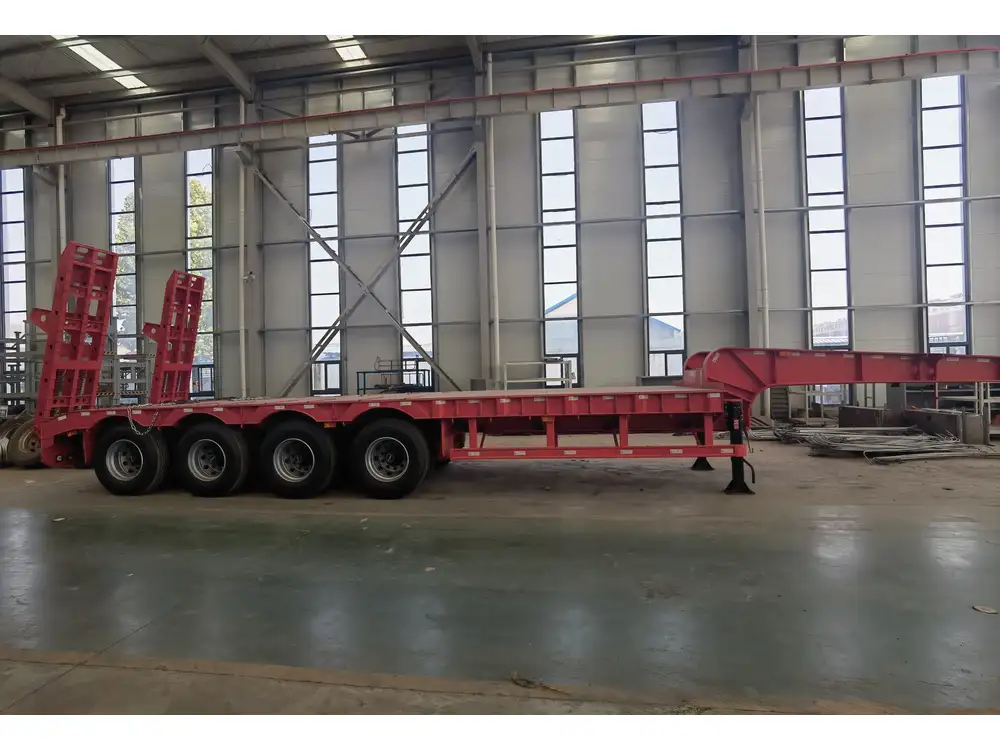
Height Specifications
A standard height of 13.5 feet allows heavy haul trailers to pass under most overpasses and bridges.
- Compliance: Essential for avoiding infrastructure collisions.
- Height Variations: Slight adjustments can be made for specific load requirements without exceeding legal limits.
- Impact on Load Stability: Proper height ensures balanced weight distribution and reduces tipping risks.
Weight Distribution and Capacity
Balancing the load across the trailer’s axles is critical to maintaining stability and compliance with weight regulations.
- Axle Configuration: Determines how weight is distributed across the trailer.
- Gross Vehicle Weight Rating (GVWR): Maximum allowable weight, including the trailer and its load.
- Load Securing: Ensures the cargo remains stable during transit, preventing accidents and damage.
Navigating Regulatory Requirements

Federal and State Regulations
Compliance with the Federal Motor Carrier Safety Administration (FMCSA) and state-specific regulations is non-negotiable for safe and legal heavy haul operations.
- Permit Requirements: Oversized and overweight loads often require special permits.
- Route Planning: Selecting routes that accommodate trailer dimensions and weight.
- Safety Standards: Adhering to regulations on load securement, braking systems, and lighting.
International Considerations
For cross-border heavy haul operations, additional regulations and dimensions must be considered based on the destination country’s standards.
- Dimension Standards: Varying limits on length, width, height, and weight.
- Documentation: Necessary permits and certificates for international transport.
- Customs Compliance: Ensuring all legal requirements are met for smooth border crossings.
Selecting the Right Heavy Haul Trailer Dimensions

Assessing Load Requirements
A thorough analysis of the load’s dimensions, weight, and handling characteristics is essential for selecting appropriate trailer dimensions.
- Load Measurement: Accurate dimensions and weight assessments.
- Handling Requirements: Determining if specialized equipment or stabilization is needed.
- Future Scalability: Considering potential variations in load sizes for future projects.
Evaluating Transportation Routes
Understanding the challenges of your transportation routes helps in selecting trailer dimensions that navigate infrastructure constraints effectively.
- Bridge Clearances: Ensuring trailer height complies with bridge regulations.
- Road Conditions: Assessing if the trailer can handle rough terrains or tight urban areas.
- Permitted Routes: Identifying paths that accommodate the trailer’s size and weight.
Balancing Cost and Efficiency
Optimizing trailer dimensions to fit load requirements while minimizing transportation costs is crucial for operational efficiency.
- Fuel Efficiency: Managing trailer weight and aerodynamics to reduce fuel consumption.
- Maintenance Costs: Selecting durable materials and designs that lower long-term maintenance expenses.
- Operational Flexibility: Choosing adaptable trailer configurations to handle diverse cargo types and sizes.

CarMax Vehicle’s Expertise in Heavy Haul Trailer Dimensions
Innovative Design and Engineering
At CarMax Vehicle, our heavy haul trailers are meticulously designed to meet the highest standards of safety, efficiency, and adaptability. Our engineering team employs advanced technologies to ensure optimal trailer dimensions tailored to your specific needs.
Customization Capabilities
We offer an extensive range of customization options, allowing you to specify trailer lengths, widths, heights, and axle configurations that align perfectly with your transportation requirements. Our flexibility ensures that you receive a trailer solution that not only meets but exceeds your operational expectations.

Quality and Durability
Our trailers are constructed using high-grade materials and undergo rigorous testing to ensure they withstand the demanding conditions of heavy haul transportation. This commitment to quality guarantees longevity and reliability, minimizing downtime and maximizing your investment.
Comprehensive Support
CarMax Vehicle provides end-to-end support, from initial consultation and design to manufacturing and after-sales service. Our dedicated team works closely with you to ensure that your heavy haul trailer dimensions are optimized for maximum performance and regulatory compliance.
Comparative Overview of Heavy Haul Trailer Dimensions
To provide a clear understanding of how different trailer types stack up against each other, consider the following comparison:
| Feature | Extendable Trailer | Gooseneck Trailer | Double Drop Deck | Multi-Axle Trailer |
|---|---|---|---|---|
| Length | 30-60 ft | 40-70 ft | 35-65 ft | 50-80 ft |
| Width | 8.5 ft | 8.5 ft | 8.5 ft | 10 ft |
| Height | 13.5 ft | 14 ft | 12 ft | 15 ft |
| Weight Capacity | 100-200 tons | 120-250 tons | 150-300 tons | 200-400 tons |
| Best For | Versatile oversized loads | Balanced heavy distribution | High-load and tall cargo | Extreme weight and size |
This table highlights the distinct advantages of each trailer type, allowing you to make informed decisions based on your specific transport requirements.
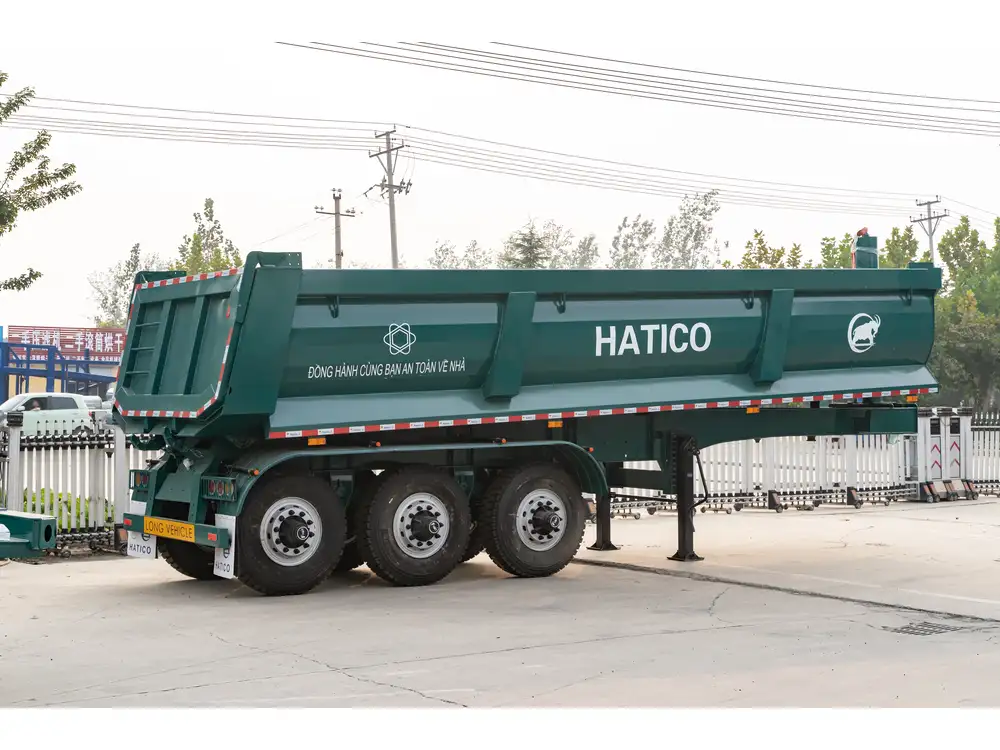
Optimizing Heavy Haul Trailer Dimensions for Efficiency
Enhancing Load Stability
Properly dimensioned trailers contribute significantly to load stability, reducing the risk of accidents and cargo damage.
- Balanced Weight Distribution: Ensures the trailer remains level during transit.
- Secure Fastening: Utilizing straps, chains, and other fastening methods to keep the load in place.
- Low Center of Gravity: Designing trailers to maintain a low center of gravity for better handling.
Minimizing Transportation Costs
Strategically selected trailer dimensions can lead to significant cost savings by optimizing fuel consumption and reducing wear and tear.
- Fuel Efficiency: Lighter trailers or those with aerodynamic designs can lower fuel usage.
- Reduced Maintenance: Durable materials and constructions decrease the frequency of repairs.
- Load Maximization: Maximizing the load capacity within legal limits ensures each trip transports the maximum possible cargo, reducing the number of trips needed.
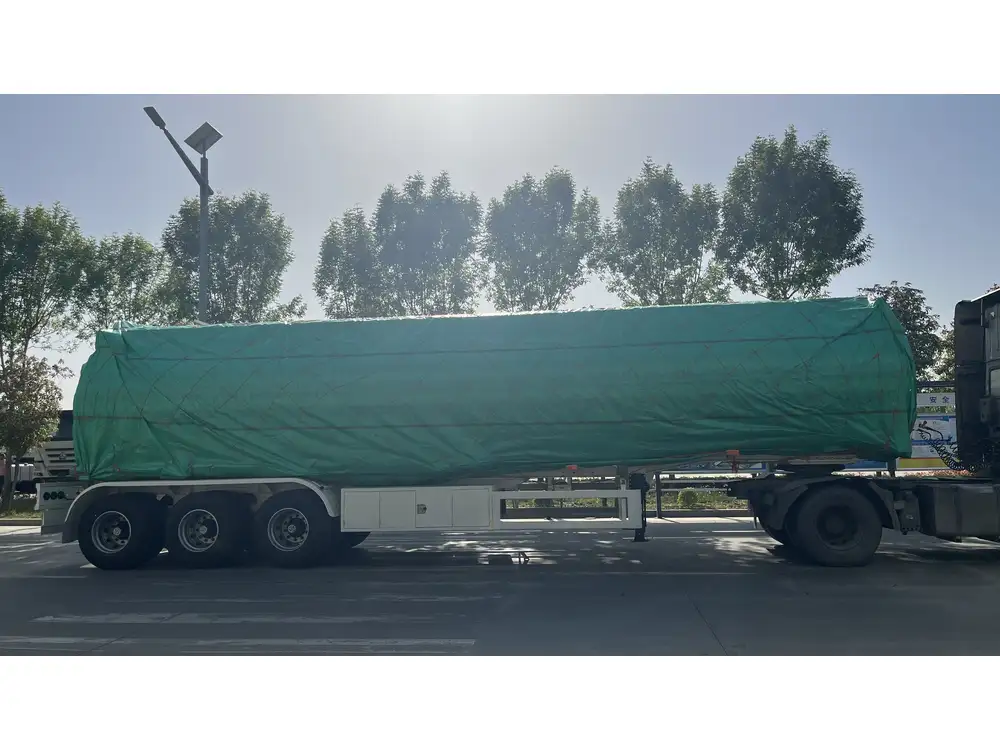
Improving Operational Flexibility
Flexible trailer dimensions allow for a wider range of loads, enhancing your ability to respond to varied transportation demands.
- Modular Designs: Facilitate quick adjustments to trailer dimensions for different loads.
- Adaptable Suspension Systems: Allow for easy modifications based on load weight and distribution.
- Universal Compatibility: Ensures trailers can integrate seamlessly with different types of towing vehicles and transport systems.
Future Trends in Heavy Haul Trailer Dimensions
Technological Advancements
The integration of modern technologies is shaping the future of heavy haul trailer dimensions.
- Smart Trailers: Equipped with sensors and IoT devices to monitor load status and trailer conditions in real-time.
- Automated Adjustments: Enable dynamic modification of trailer dimensions based on load requirements.
- Advanced Materials: Lightweight yet strong materials are being developed to enhance trailer performance and reduce weight.

Sustainability Practices
Sustainable practices are becoming increasingly important in the design and manufacturing of heavy haul trailers.
- Eco-Friendly Materials: Utilizing recyclable and sustainable materials in trailer construction.
- Energy-Efficient Designs: Optimizing aerodynamics and reducing weight to lower fuel consumption.
- Emission Reduction Technologies: Implementing systems that minimize the environmental impact of heavy haul transportation.
Regulatory Evolution
As transportation demands grow, regulations governing heavy haul trailer dimensions are evolving to enhance safety and efficiency.
- Stricter Compliance Standards: Increasingly comprehensive regulations to ensure safe heavy haul operations.
- Enhanced Safety Features: Mandating the inclusion of advanced safety systems in trailer designs.
- Dynamic Permitting Processes: Streamlining permit applications to accommodate the growing complexities of heavy haul transportation.
Conclusion
Understanding and optimizing heavy haul trailer dimensions is a critical aspect of successful heavy transportation operations. At CarMax Vehicle, we provide tailored heavy haul trailer solutions that meet your specific needs while ensuring compliance with all regulatory standards. Our commitment to quality, innovation, and customer satisfaction makes us the ideal partner for your heavy haul transportation requirements.
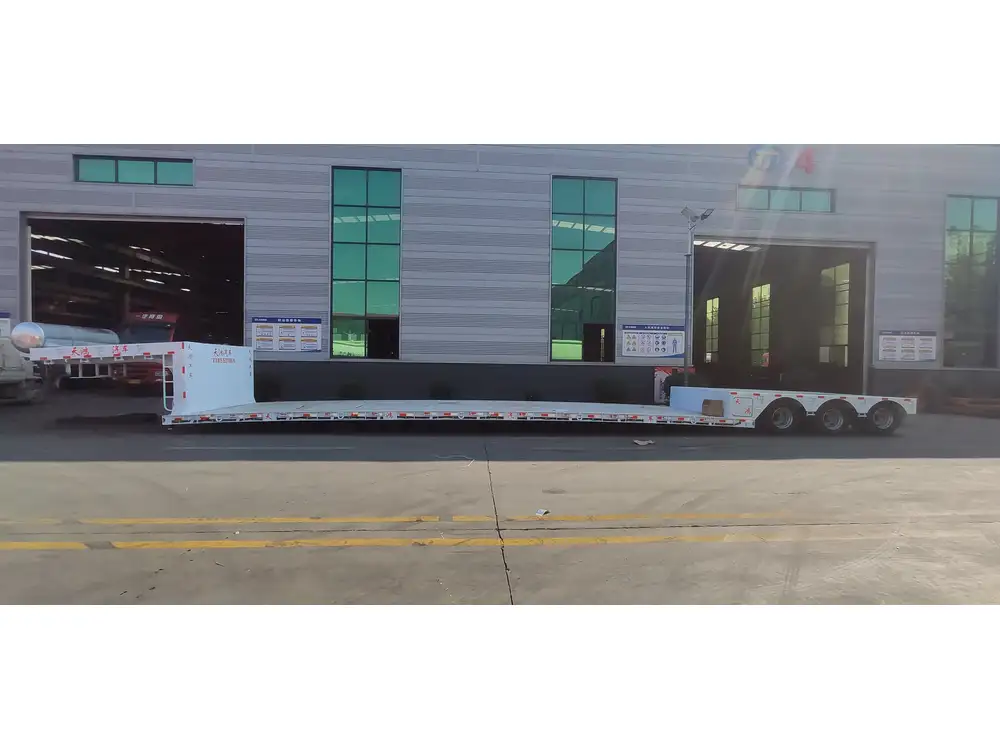
Frequently Asked Questions
1. What are the standard dimensions for heavy haul trailers?
Heavy haul trailers typically range from 30 to 80 feet in length, 8.5 to 10 feet in width, and 12 to 15 feet in height. Weight capacities vary from 100 to 400 tons, depending on the trailer type and customization.
2. How do I determine the right heavy haul trailer dimensions for my load?
Assess the load’s size, weight, and handling requirements. Consider route constraints, regulatory limits, and operational efficiency. Consulting with a specialized manufacturer like CarMax Vehicle can help tailor the ideal trailer dimensions for your specific needs.

3. Are custom heavy haul trailers more expensive than standard ones?
Custom heavy haul trailers generally involve higher initial costs due to tailored design and manufacturing. However, they offer enhanced functionality, compliance, and efficiency, potentially leading to long-term cost savings through optimized operations.
4. What regulations must be considered when selecting heavy haul trailer dimensions?
Compliance with federal and state regulations is essential, including limits on length, width, height, and weight. Special permits may be required for oversized or overweight loads. It’s crucial to stay updated with the Department of Transportation (DOT) guidelines and state-specific laws.
5. Can heavy haul trailer dimensions be adjusted after manufacturing?
Many heavy haul trailers offer adjustable features, such as extendable sections or modular components, allowing for modifications to accommodate different loads. However, extensive changes may require professional engineering and re-certification to ensure safety and compliance.



